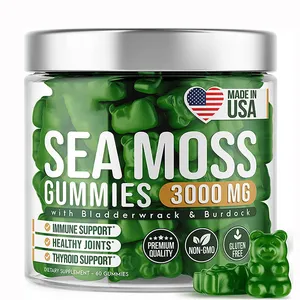Populair in uw branche






Waarschuwing Reflecterende Driehoek Road Pole Traffic Gedrukte Gevarenborden Veiligheid Waarschuwt Bord Auto Vroegtijdige Waarschuwing Apparaat Driehoek
Klaar voor verzending
€ 1,34 - € 2,56
Min. bestelling: 30 stukken
Verzending per stuk: € 11,65







Noodwaarschuwing Driehoekteken Verkeersveiligheidsreflector Auto
€ 0,4079 - € 0,4265
Min. bestelling: 2 stukken
Verzending per stuk: € 3,71







Aangepaste Reflecterende Buitenverkeersveiligheid Waarschuwingsbord Aluminium Bord
€ 4,18 - € 37,55
Min. bestelling: 50 stukken







Verkeersveiligheid Mobiele Aanhangwagen Knipperend Waarschuwingsbord Pijlbord
€ 2.317,45 - € 3.522,52
Min. bestelling: 1 stuk







Aangepast Verkeersbord Reflecterend Waarschuwingsverkeer Aluminium Verkeersveiligheidsstop Straatnaamborden Fabricage
€ 0,4635 - € 2,32
Min. bestelling: 500 stukken







Opvouwbare Weg Potentieel Gevaar Waarschuwing Natte Vloer Waarschuwing Bestrating Borden
€ 1,20 - € 1,85
Min. bestelling: 200 stukken
Verzending per stuk: € 9,64






Plastic Zwarte Valbeveiliging Borden Beperkt Areaal Waarschuwingsbord Val Gevaar Gevaar Gevaar Gevaar Open Pitbord Val Gevaar Geen Toegang
€ 2,32 - € 3,07
Min. bestelling: 300 stukken
Verzending per stuk: € 0,8992




Vloerbord Gesloten Voor Reiniging Veiligheidsgevaar Een Frame Waarschuwing Natte Plastic Borden
€ 2,17 - € 2,92
Min. bestelling: 100 stukken
Verzending per stuk: € 30,60






Reflecterende Zwarte Rode Besloten Ruimte Diep Uitgraving Elektrisch Gevaar Hoogspanning Buiten Waarschuwing Aluminium Gevarenborden
€ 1,63 - € 5,29
Min. bestelling: 200 stukken
Verzending per stuk: € 436,24






Gele Natte Vloer Waarschuwen Een Inklapbaar Bord Tweetalige Waarschuwingsborden Voor Potentieel Gevaar Voor Commercieel Gebruik
€ 1,39 - € 1,49
Min. bestelling: 100 stukken

Gele Natte Vloer Waarschuwen Een Inklapbare Bord Waarschuwingsborden Voor Commercieel Gebruik Potentieel Gevaar
€ 0,9919 - € 1,19
Min. bestelling: 1000 paren
Verzending per stuk: € 101,28






Aluminium Of Plastic Geen Roken Gevaarlijk Waarschuwingsborden In Hotels
€ 2,79
Min. bestelling: 500 stukken
Gerelateerde zoekopdrachten:
driehoekig waarschuwingsbordwaarschuwingsbord leverancierrood waarschuwingsbordgevaar waarschuwingsbordafdrukbare waarschuwingsbordteken symboolreflecterend driehoekswaarschuwingsbordfabriek waarschuwingsbordopvouwbaar waarschuwingsbordwaarschuwingsbord gevaarrode driehoek waarschuwingsbordgrappig waarschuwingsbordwaarschuwingsbord op hoge temperatuur42cm waarschuwingsbordoctagon waarschuwingsbord






Geel Voorzichtigheid Natte Vloer Teken Met Tweetalige Waarschuwingsborden Voor Commerciële Gebruik Goed Als Een Inklapbare Teken Om Een Potentiële gevaar
€ 1,72 - € 1,77
Min. bestelling: 1000 stukken





Aangepaste Metalen Weg Gevaar Waarschuwingsbord Werf Beveiliging Reflecterende Waarschuwing Straatnaamborden Aluminium Snelweg Verkeersgevaar Waarschuwingsbord
€ 0,2318 - € 1,67
Min. bestelling: 500 sets
Verzending per stuk: € 36,39






Securun 2024 Gevaar Valgevaar Werfborden Voorzichtigheid Gazon Tuinbord Golfplaten Plastic Werf Verkoopborden Met Palen Gazon Decoratie
€ 10,59 - € 11,32
Min. bestelling: 100 stukken
Verzending per stuk: € 4,37






Wegverkeer Snelweglift Veiligheidsborden Gevaren Voor Werk
€ 9,27
Min. bestelling: 100 stukken
Verzending per stuk: € 537,36





Op Maat Gemaakte Aluminium Rijbaan Veiligheid Verkeersbord Groothandel Gevaar Waarschuwing Uv Afdrukken Waarschuwingsbord Voor Weg High Way
€ 18,54
Min. bestelling: 500 stukken
Verzending per stuk: € 1,87






"Gevaar-Hoogspanning, Gevaar Voor Elektrische Schokken" Niet Aanraken Teken 10 "X 14" Aluminium Bewegwijzering Fabriek
€ 0,927 - € 1,86
Min. bestelling: 50 stukken
Verzending per stuk: € 0,8807


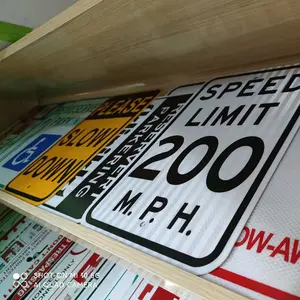



Custom Gevaar Amazon Hot Koop Roest Gratis Aluminium Metalen Gezondheid Veiligheid Gevaar Waarschuwing Voorzichtig Teken Voor Veiligheidsbewustzijn
€ 0,927 - € 2,79
Min. bestelling: 100 stukken






Op Maat Bedrukbaar A-Vorm Pp Plastic Opvouwbare Waarschuwing Gevaar Veiligheid Waarschuwing Waarschuwing Waarschuwing Natte Vloer Bord
€ 1,13 - € 1,43
Min. bestelling: 100 stukken





Gevaar Voorzichtigheid Hoogspanning Elektrische Gevaar Veiligheid Waarschuwingsborden Signage Symbool Board Betekenis
€ 3,90 - € 5,10
Min. bestelling: 100 stukken
Verzending per stuk: € 7,18






Aangepaste Plastic Vouwen Gladde Gevaar Waarschuwing Veiligheid Board Bewegwijzering Multicolor Printable Een-Vorm Voorzichtigheid Natte Vloer Teken
€ 1,40 - € 2,68
Min. bestelling: 500 stukken






24 Uur Videobewaking Geen Verboden Aluminium Waarschuwingsborden Voor CCTV-Bewakingscamera Reflecterend UV-Bestendig
€ 0,1854 - € 1,67
Min. bestelling: 10 zakken






veiligheid reflecterende waarschuwing voor gevaar voorzichtigheid teken
€ 0,1391 - € 0,1669
Min. bestelling: 100 stukken



Hoge Zichtbaar Draagbare Road Vouwen Universele Truck Emergency Teken Weg Gevaar Driehoek
€ 1,23 - € 1,32
Min. bestelling: 1000 stukken






Waarschuwingsdriehoek Noodgevaar Veiligheidsreflecterende Waarschuwing Auto Waarschuwing Driehoek Teken Reflector Voor Voertuigen
€ 0,927 - € 1,30
Min. bestelling: 100 stukken



Custom hoge kwaliteit zeer brandbare printing fire veiligheid waarschuwingsborden
€ 0,1854 - € 1,86
Min. bestelling: 200 stukken












Aangepaste Led Wegverkeer Doppler Snelheid Radar Sensor Snelheidsdetectie Radarsignaal Detector Auto Snelheid Laser Zonne-Limiet Teken
€ 55,62 - € 73,24
Min. bestelling: 2 stukken






Veiligheid Voorzichtigheid Board Gevaar Gladde Veiligheid Teken Natte Vloer Voorzichtigheid Teken
€ 1,49 - € 2,32
Min. bestelling: 500 stukken






Hoog Reflecterende Auto Nooddriehoek Gevuld Zand Ongeval Waarschuwingsborden
€ 1,77 - € 2,22
Min. bestelling: 2 stukken
Verzending per stuk: € 21,78




Professionele Nat Floor Waarschuwing Voorzichtigheid Hazard Veiligheid Teken Schoonmaken Gladde
€ 0,927 - € 1,86
Min. bestelling: 20 stukken





Elektrische apparatuur gevaar waarschuwing photoluminescent veiligheid borden
€ 14,74 - € 18,45
Min. bestelling: 100 stukken
Verzending per stuk: € 1,26


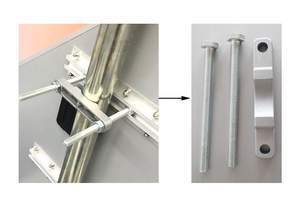


Internationale Goedkope alle Elektronische Verkeer in Indonesië Filippijnse Veiligheid Controle Borden Elektrisch Gevaar Waarschuwing Bord
€ 184,47 - € 324,45
Min. bestelling: 500 stukken


Fabriek Directe Verkoop Op Maat Patroon Geel Aluminium Bord Verkeer Weg Gevaar Langzaam Waarschuwingsbord
€ 1,85 - € 4,63
Min. bestelling: 500 stukken






Waarschuwing Sociale Afstand Vloerbord, Anti Slipteken, Antislipteken
€ 4,62 - € 9,27
Min. bestelling: 50 stukken



Gevaar Voorzichtigheid Hoogspanning Elektrische Gevaar Veiligheid Waarschuwingsborden
€ 12,52 - € 12,80
Min. bestelling: 300 stukken






Afdrukbare Waarschuwingsbord/Gevarenwaarschuwingsborden Op Maat Gemaakt Plastic Een Vorm Waarschuwing Waarschuwing Gele Natte Vloerborden
€ 0,927 - € 1,86
Min. bestelling: 10 stukken
Verzending per stuk: € 277,54
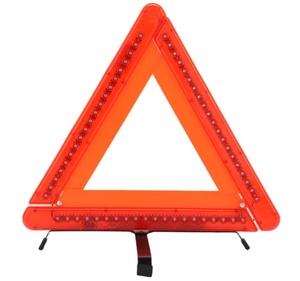
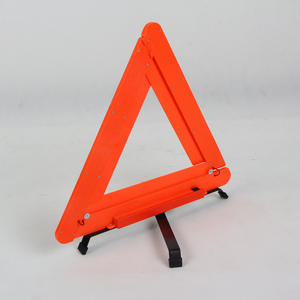
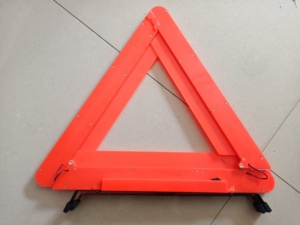
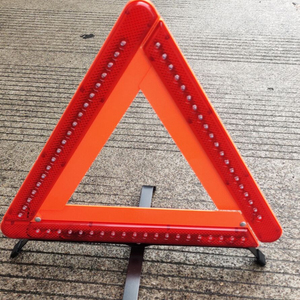
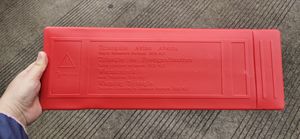
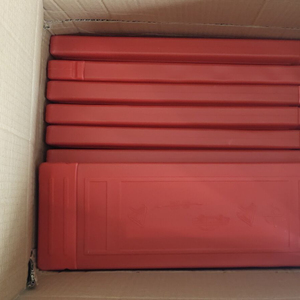
Noodgevaarteken Led Light Cars Trip Road Auto Reflective Stop Waarschuwing Triple Warning Kit Driehoek Bord
€ 4,48 - € 4,58
Min. bestelling: 100 stukken
Verzending per stuk: € 147,72
Topcategorieën
Over waarschuwingsborden gevaar
waarschuwingsborden gevaar zijn tegenwoordig niet nieuw voor de gewone man en worden niet langer als taboe beschouwd om te gebruiken. Als je op zoek bent naar dat voorlaatste plezier, moet je het immense bekijken. waarschuwingsborden gevaar verzameling op Alibaba.com. Deze wulpse en bochtige. waarschuwingsborden gevaar zijn elke cent waard en zullen de avond zeker speciaal voor u maken. Deze poppen zien er in alle opzichten levensecht uit, beginnend van hun haar tot tenen.
Of je nu een eenzaam persoon bent die op zoek is naar een levensechte partner of een stel dat hun leven wat meer pit wil geven, je kunt deze gebruiken . waarschuwingsborden gevaar om dat vuur aan te steken. Deze spectaculaire. waarschuwingsborden gevaar zijn aanpasbaar in overeenstemming met uw verwachtingen. Deze verbazingwekkende. waarschuwingsborden gevaar zijn beschikbaar in zowel mannelijke als vrouwelijke versies en zijn gemaakt van siliconen van medische kwaliteit voor veilig gebruik. Koop er nu een en geniet van een nacht vol passie en vuur.
Alibaba.com biedt deze verbluffende. waarschuwingsborden gevaar in alle lichaamsvormen, maten en etniciteiten. Wat uw vereisten ook zijn voor de. waarschuwingsborden gevaar, u kunt ze allemaal op de site krijgen. Deze. waarschuwingsborden gevaar worden in vorm gegoten door de beste vakmensen en elk ingewikkeld detail wordt grondig geïnspecteerd. Deze poppen hebben ogen, haar, nagels en alle andere lichaamsdelen die lijken op die van een echt persoon.
Alibaba.com biedt een breed spectrum van. waarschuwingsborden gevaar waarmee u producten kunt kopen die passen binnen uw budget en andere vereisten. Deze producten zijn veilig in gebruik, gecertificeerd en milieuvriendelijk van aard. OEM-bestellingen zijn beschikbaar voor deze producten.
Of je nu een eenzaam persoon bent die op zoek is naar een levensechte partner of een stel dat hun leven wat meer pit wil geven, je kunt deze gebruiken . waarschuwingsborden gevaar om dat vuur aan te steken. Deze spectaculaire. waarschuwingsborden gevaar zijn aanpasbaar in overeenstemming met uw verwachtingen. Deze verbazingwekkende. waarschuwingsborden gevaar zijn beschikbaar in zowel mannelijke als vrouwelijke versies en zijn gemaakt van siliconen van medische kwaliteit voor veilig gebruik. Koop er nu een en geniet van een nacht vol passie en vuur.
Alibaba.com biedt deze verbluffende. waarschuwingsborden gevaar in alle lichaamsvormen, maten en etniciteiten. Wat uw vereisten ook zijn voor de. waarschuwingsborden gevaar, u kunt ze allemaal op de site krijgen. Deze. waarschuwingsborden gevaar worden in vorm gegoten door de beste vakmensen en elk ingewikkeld detail wordt grondig geïnspecteerd. Deze poppen hebben ogen, haar, nagels en alle andere lichaamsdelen die lijken op die van een echt persoon.
Alibaba.com biedt een breed spectrum van. waarschuwingsborden gevaar waarmee u producten kunt kopen die passen binnen uw budget en andere vereisten. Deze producten zijn veilig in gebruik, gecertificeerd en milieuvriendelijk van aard. OEM-bestellingen zijn beschikbaar voor deze producten.



